Bonsai is the ancient Japanese art of growing miniature trees that mimic the shape and style of full-sized trees.
Among the many species suitable for bonsai, the jade plant, also known as Crassula ovata, stands out for its thick, succulent leaves, slow growth, and ease of care.
Creating a jade bonsai allows you to enjoy a unique blend of elegance and symbolism. Jade bonsai is believed to bring good luck, prosperity, and positive energy to your home.
Here are seven simple steps to bonsai your jade plant successfully.
Step 1: Choosing the Right Jade Plant
The first step in creating a jade bonsai is selecting a healthy plant.
Look for a jade plant that has thick, firm leaves, a sturdy stem, and no signs of disease or pests.
Younger plants are often easier to shape and train, but mature plants can also be used for a more established look. Choose a plant with multiple branches if possible, as this will give you more flexibility in shaping.
Additionally, check for natural branch variations, which can make the bonsai appear more lifelike.
Avoid plants with yellowing leaves or soft stems, as these indicate poor health and may struggle with bonsai techniques.
Step 2: Selecting a Suitable Pot
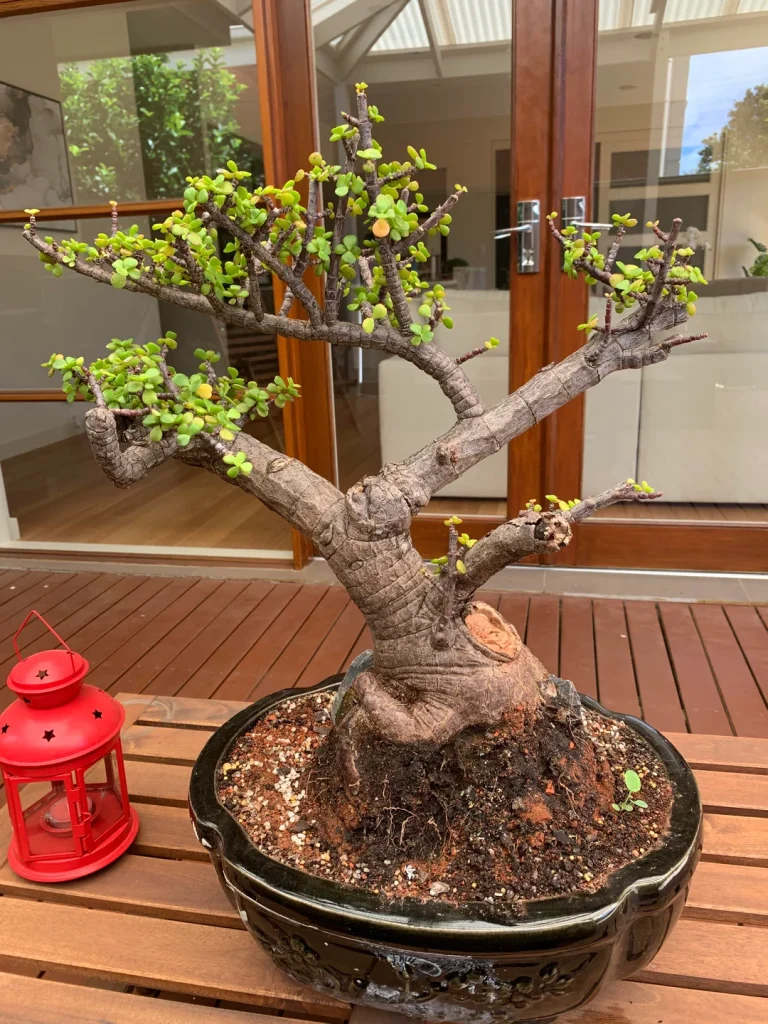
The pot you choose for your jade bonsai is essential for both aesthetics and health. Bonsai pots are typically shallow to restrict root growth and help maintain the miniature size of the tree.
Choose a pot with drainage holes to prevent water from pooling at the bottom and causing root rot. Clay or ceramic pots are ideal because they allow soil to breathe and support proper moisture regulation.
Consider the color and shape of the pot to complement the plant and create a harmonious display.
Wider pots allow the roots to spread and can accommodate more branches, while narrow pots emphasize the height and vertical structure.
Step 3: Pruning the Jade Plant
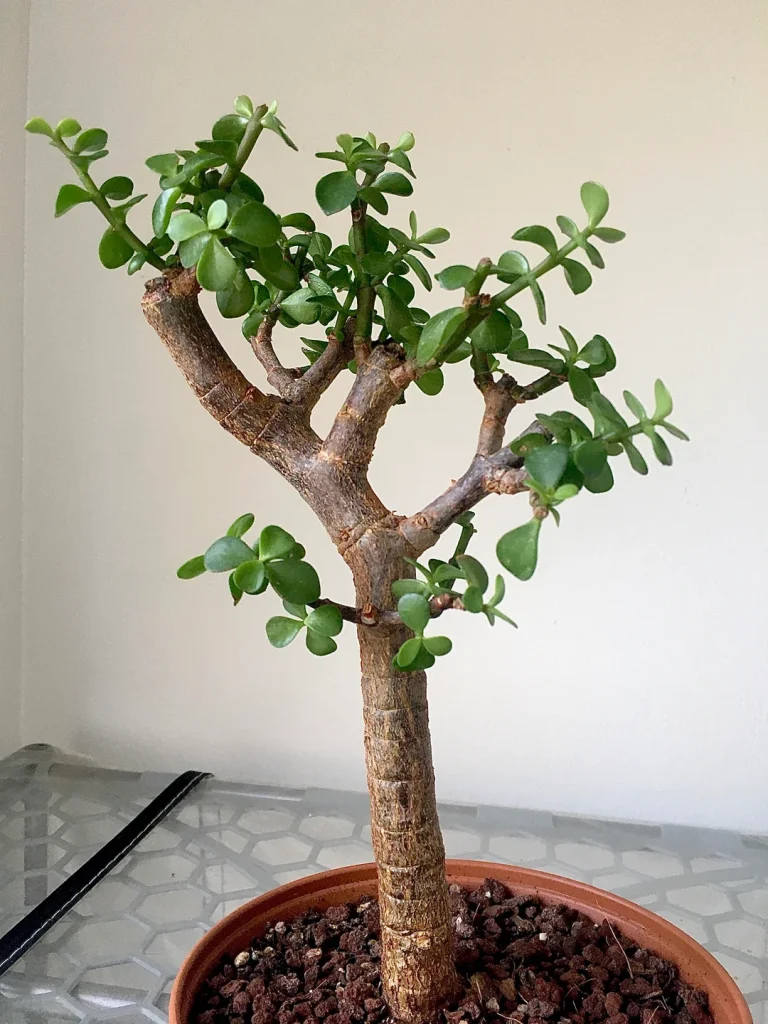
Pruning is the foundation of bonsai. The goal is to shape your jade plant and encourage a compact, balanced structure.
Start by removing any dead, damaged, or weak branches. Then, selectively prune branches to create the desired shape, whether it’s a traditional upright style, a cascading style, or a more informal arrangement.
Prune the leaves selectively to reduce size and improve airflow through the branches. Use clean, sharp pruning shears to make precise cuts.
Pruning is best done in the spring or early summer when the plant is actively growing. Regular pruning over time will help develop thick branches and a strong trunk, which are key features of an attractive bonsai.
Step 4: Wiring the Branches
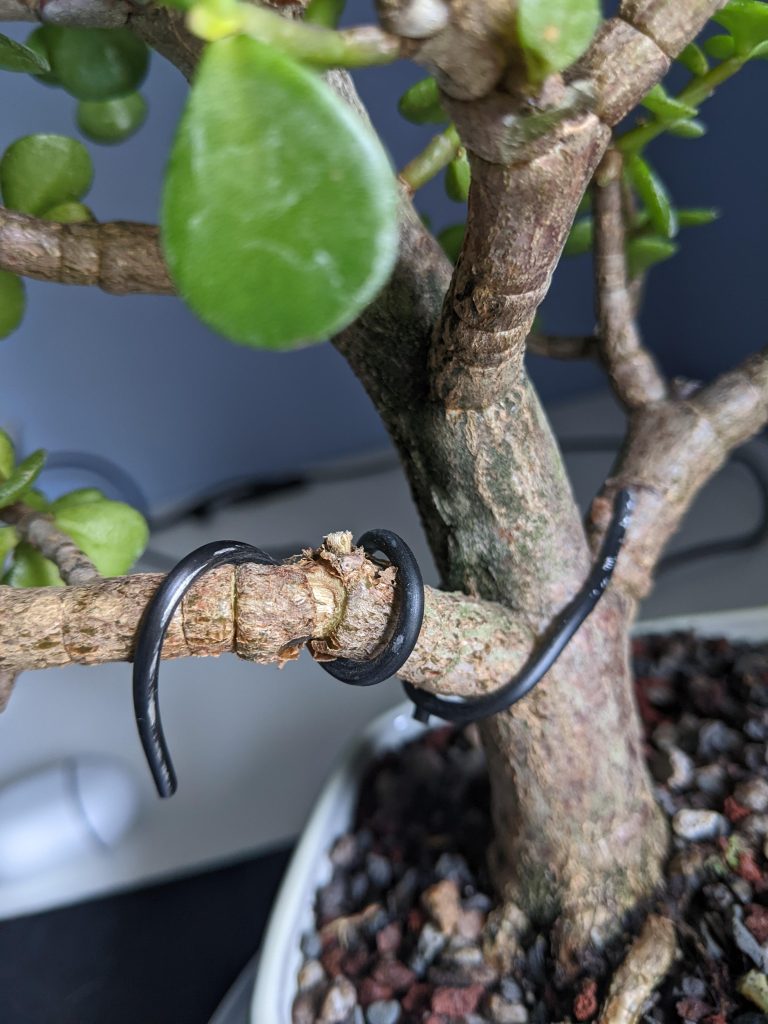
Wiring is a technique used to guide the growth and direction of bonsai branches. Use soft aluminum or copper wire to gently wrap around the branches, bending them into the desired shape.
Be careful not to wrap the wire too tightly, as this can damage the stem and leaves. Check the wired branches regularly and remove the wire once the branch has set into its new position, typically after a few months.
Wiring allows you to create curves, twists, and a natural, artistic structure for your jade bonsai.
Over time, this method can help develop a tree with a realistic, flowing form that captures the essence of mature trees in nature.
Step 5: Soil and Repotting
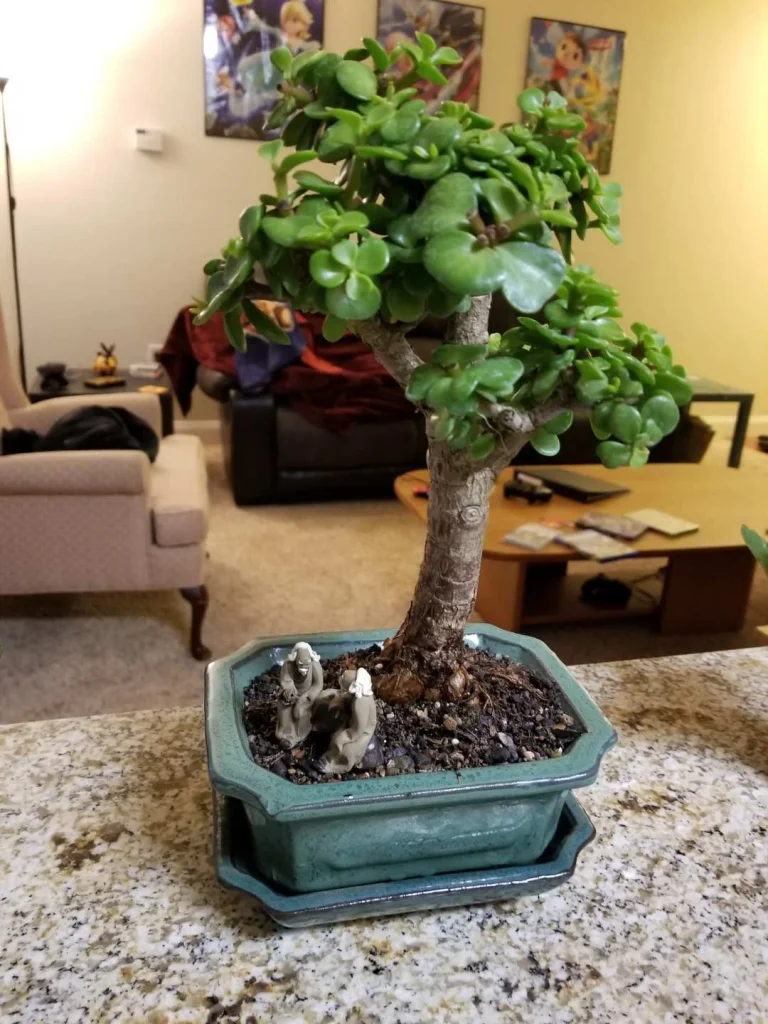
The right soil mix is critical for the health of your jade bonsai. Jade plants require well-draining soil, as they are highly susceptible to root rot.
A mixture of succulent or cactus soil with added perlite or coarse sand works well. When repotting, gently remove the plant from its old soil, trim any overly long or damaged roots, and place it in the new soil mix.
Repotting is also an opportunity to shape the root system, which is an important part of bonsai aesthetics.
Repot every two to three years to refresh the soil and support healthy growth.
A strong root system ensures stability for the plant, and careful root pruning during repotting encourages more compact, controlled growth.
Step 6: Watering and Fertilizing
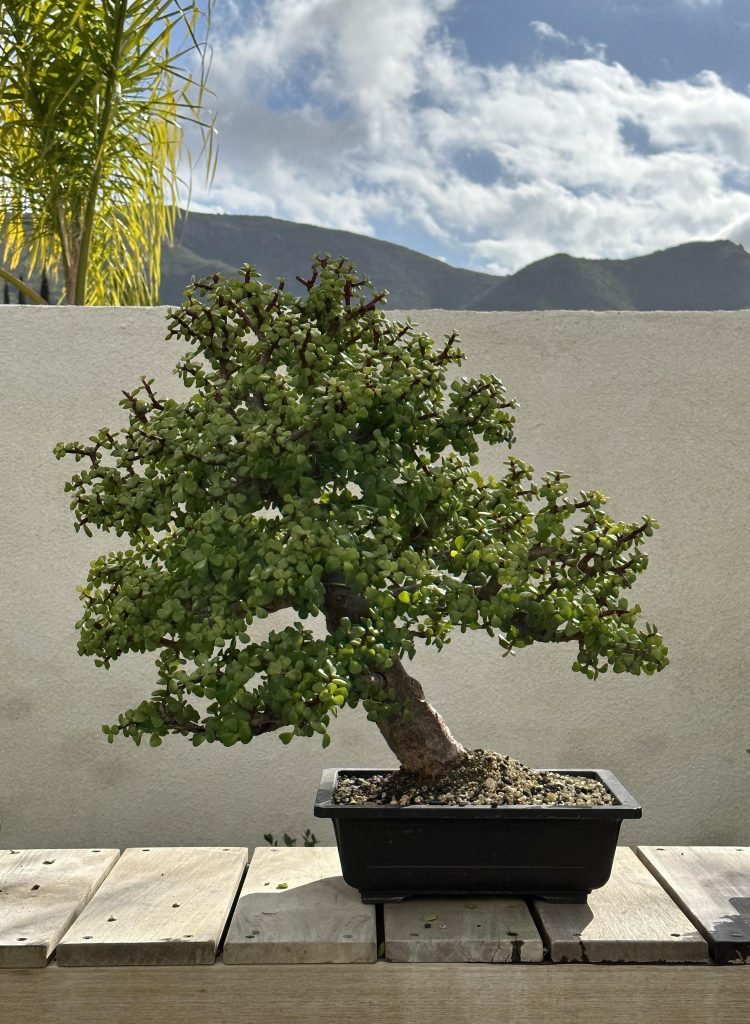
Watering a jade bonsai requires careful attention.
These plants store water in their thick leaves and stems, so overwatering can easily cause root rot.
Water the plant thoroughly when the soil is completely dry, allowing excess water to drain from the pot.
During the growing season in spring and summer, water more frequently, but reduce watering in fall and winter when the plant is dormant.
Fertilize the bonsai monthly with a diluted, balanced liquid fertilizer during the growing season. Avoid fertilizing in winter, as the plant’s metabolism slows down and excess nutrients can harm it.
Fertilization supports strong leaf growth, encourages branching, and maintains vibrant green leaves. Occasional foliar feeding with a weak fertilizer solution can also enhance leaf health and color.
Step 7: Maintenance and Care
Maintaining your jade bonsai involves regular observation, pruning, and adjusting care routines as needed.
Monitor for signs of pests such as mealybugs or spider mites, and treat infestations promptly. Keep the bonsai in a bright, indirect light location, ideally near a south-facing window.
Rotate the plant occasionally to ensure even growth on all sides. Remove any yellowing or dead leaves promptly to maintain a clean appearance.
Seasonal adjustments are essential, including reduced watering in winter and careful protection from extreme temperatures or drafts.
Over time, your jade bonsai may develop thickened branches, a gnarled trunk, and unique character lines, which are the hallmarks of a mature bonsai.
Additional Tips for Bonsai Success
- Patience is Key: Bonsai is a slow art form. It may take years for your jade bonsai to achieve the desired shape and fullness. Avoid rushing the process and enjoy watching the plant gradually develop.
- Observe Natural Growth: Study how the jade plant grows naturally and try to mimic its natural lines. Avoid forcing unnatural shapes that may stress the plant.
- Encourage Branching: Pinch back new growth to promote branching and create a fuller, more balanced canopy.
- Seasonal Adjustments: Pay attention to the plant’s needs during different seasons, including adjusting watering, light exposure, and fertilization.
- Regular Cleaning: Wipe the leaves occasionally to remove dust and allow the plant to photosynthesize efficiently.
- Use Companion Plants: Some bonsai enthusiasts add moss or small ground cover plants to the soil surface to enhance the aesthetic appeal and mimic natural landscapes.
Common Mistakes to Avoid
Even experienced gardeners can make mistakes when creating a jade bonsai. Overwatering remains the most common error, often leading to root rot and leaf drop.
Pruning too aggressively can weaken the plant or result in an unbalanced shape. Wiring without careful monitoring can cut into the branches and cause permanent scars.
Avoid placing the bonsai in low light conditions, as insufficient light can result in leggy growth and weak branches. Improper soil or lack of drainage can also stunt growth or harm the roots.
Following proper bonsai techniques will prevent these problems and keep your jade bonsai healthy for decades.
Benefits of Growing a Jade Bonsai
Creating a jade bonsai offers more than just aesthetic pleasure.
The plant is believed to attract wealth, prosperity, and positive energy, making it a meaningful addition to your home or office.
Bonsai cultivation is also a meditative practice that promotes patience, focus, and mindfulness. Watching the tree evolve over time creates a sense of accomplishment and deep connection with nature.
The jade bonsai is hardy, long-lived, and adaptable, making it suitable for both beginners and experienced bonsai enthusiasts.
Bonsai is an art that combines creativity, patience, and horticultural knowledge. By following these seven simple steps, you can create a stunning jade bonsai that thrives for years.
Remember that successful bonsai cultivation requires attention to detail, proper pruning, watering, and seasonal care.
With time and dedication, your jade bonsai will not only enhance your living space but also provide a lasting symbol of prosperity and beauty.
Enjoy the journey of shaping, nurturing, and observing your jade bonsai as it grows into a miniature masterpiece.
